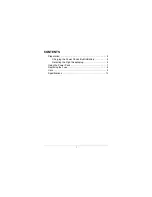
12
If your jigsaw becomes too hot, especially when used at low speed, set the speed to maximum and run no Load for 2-3
minutes to cool the motor. Avoid prolonged usage at very low speeds.
GENERAL
Always use a blade suited to the material and material thickness to be cut. Always ensure the work piece is firmly held
or clamped to prevent movement. For easier control, use low speed to start cutting, then increase to correct speed.
Any movement of the material may affect the quality of the cut. The blade cuts on the upward stroke and may chip the
uppermost surface or face of the work piece. Ensure your uppermost surface is a non-visible surface when your work
is finished.
CUTTING LAMINATES
Use a fine tooth blade when cutting most laminates and thin wood materials. To reduce edge chipping, clamp pieces of
waste wood at both ends on both sides and cut through the waste wood during cutting.
CIRCLE CUTTING
Do not use the pendulum action when cutting tight circles or angles.
PLUNGE SAWING (See Fig. J, K)
Plunge cutting may be used only on soft materials such as wood, aerated concrete, gypsum plaster boards, etc.!
Use only short saw blades.
Place the front edge of the base plate on the workpiece and switch on. Press the tool firmly against the work piece and
plunge the saw blade slowly into the work piece.
As soon as the complete surface of the base plate rests on the work piece, continue to saw along the cutting line.
METAL CUTTING
Use a finer tooth blade for ferrous metals and a coarse tooth blade for non-ferrous metals. When cutting thin sheet
metals always clamp wood on both sides of the sheet to reduce vibration or tearing of the sheet metal. Both wood
and sheet metal must be cut. Do not force the cutting blade when cutting thin metal or sheet steel as they are harder
materials and will take longer to cut. Excessive blade force may reduce the life of the blade or damage the motor. To
reduce heat during metal cutting, add a little lubricant along the cutting line.
WORK HINTS FOR YOUR JIGSAW
The finger protection (15) is located in front of the blade holder. Whilst working, it will help prevent accidental contact
with moving blade.
12. FINGER PROTECTION
Fig. J
Fig. K


































